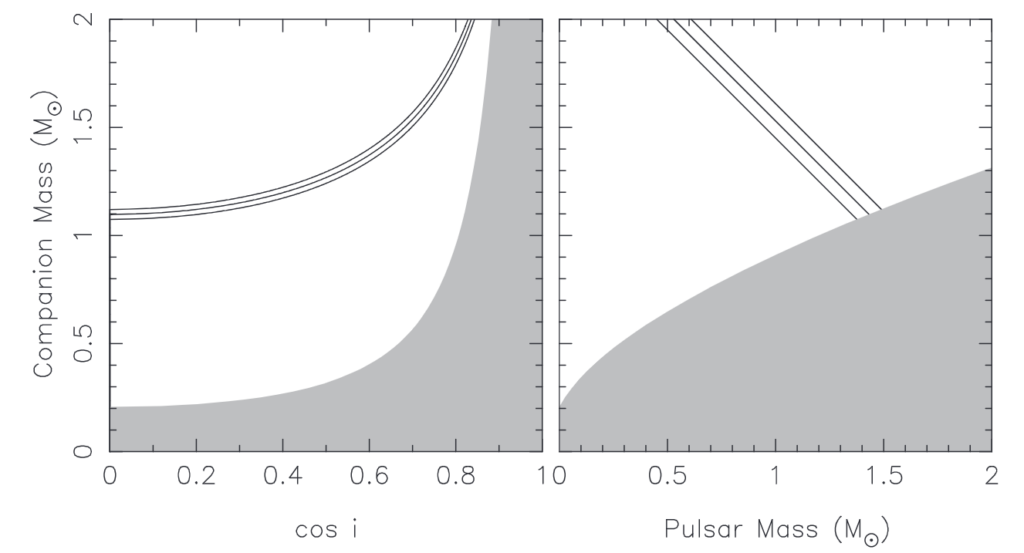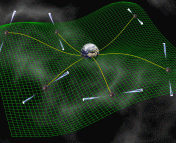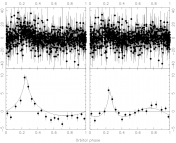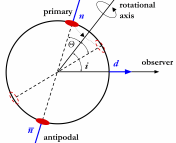Title: Missing for 20 yr: MeerKAT re-detects the elusive binary pulsar M30B
Authors: Vishnu Balakrishnan, Paulo Freire, Scott Ransom, et al. (14 additional authors)
First Author’s Institution: Max Planck Institute for Radio Astronomy, Bonn, Germany
Status: Accepted for publication to the Astrophysical Journal Letters (open access)
Globular clusters (GCs) are dense clumps of stars bound together by gravity. They are found in almost every galaxy, with over 150 known globular clusters in the Milky Way alone. Due to the high concentration of stars, especially in their centers, GCs tend to be hectic environments with lots of close interactions between stellar systems, and even the occasional collision.
For this reason, GCs are great environments for discovering and studying millisecond pulsars (MSPs). Pulsars are dense, rapidly rotating neutron stars left over from the core-collapse supernova of a high mass star. If the pulsar happens to be in a binary orbit with another star, the pulsar can pull some of the outer layers of the companion star onto itself, forming an accretion disk which will eventually transfer its angular momentum to the pulsar, spinning the pulsar up to rotation rates as fast as several hundred rotations per second! Astronomers have found an abundance of MSPs in globular clusters, since the high concentration of stars leads to a lot of stellar interactions, and thus the creation of lots of binaries– roughly 90% of the known pulsars in GCs are MSPs.
Eager to find new MSPs in exotic binaries, astronomers will often survey GCs to search for periodic signals originating from pulsars. Today’s paper announces the re-detection of an MSP in the M30 globular cluster, creatively named M30B, as it’s the second pulsar discovered in M30. The pulsar was originally discovered in 2001 with the Green Bank Telescope, but follow-up observations of the region were never able to re-detect the pulsar’s emission. The original findings were tantalizing, suggesting that M30B is an MSP in a very eccentric orbit– but characterizing the system’s properties require a long-term observational campaign, made impossible by the pulsar’s “disappearance”. Using the MeerKAT radio telescope array in South Africa, today’s authors were able to re-detect the pulsar’s emission for the first time since 2001, and pursue follow-up observations to learn about the properties of M30B.
How Does A Pulsar Disappear?
So, what makes a pulsar undetectable for 20 years, and how were we able to find it again? The answer seems to be a combination of factors: first, M30B appears to be a relatively dim pulsar, meaning we need very sensitive telescopes to consistently detect its emission. The detection 20 years ago seems to have been aided by the good fortune of diffractive scintillation (DS), an effect of the turbulent interstellar medium, which can cause the signal from a pulsar to dim or brighten, just like our atmosphere causes stars to ‘twinkle’. Today’s authors, as well as the authors of the original detection, posit that the pulsar’s discovery 20 years ago would not have been possible without the signal being boosted by diffractive scintillation.

Since this boosting is unpredictable, we can’t plan observations around when the effects of DS will help rather than hurt us– and the few observations of M30B since its discovery have been unable to detect the pulsar, until today’s paper. It’s likely that the detections reported here were also helped out a bit by DS, but these observations also benefit from a more sensitive telescope at a lower observing frequency. MeerKAT, with its array of many dishes and larger bandwidth, is more sensitive than the instrumentation was at Green Bank 20 years ago. We also know that pulsar signals tend to be brighter at lower radio frequencies: MeerKAT took observations at the original Green Bank observing frequency as well as in a lower frequency band, and the lower-frequency observations were the only ones in which M30B was detected.
Using the many radio dishes at MeerKAT, the team were able to localize the position of the pulsar within the globular cluster to much higher accuracy than the discovery observations were able to. As shown in Figure 1, telescope arrays are able to create many beams on the sky, with the position and size of each beam shown with the gray ellipses. Pulsars can be localized by determining which beams the signal is detected in; using this technique, M30B was localized to about 1.2 arcminutes away from the center of the GC, just outside the half-light radius, the radius enclosing half of the luminosity of the GC.
The Eccentric Life of a Pulsar
The long-term observations of M30B with MeerKAT revealed that the pulsar is indeed in one of the most eccentric pulsar binaries known. Eccentricity is a measure of how circular (or not) an orbit is– closed orbits have eccentricities between 0 and 1, with higher values being less circular. Most pulsar binaries are circular (with an eccentricity close to zero) but this binary’s eccentricity is 0.87! Using the other orbital properties measured in the timing campaign, today’s authors were able to measure the total mass of the system, as well as put limits on the individual masses of each object.

Using the measured orbital parameters of M30B and the predictions of general relativity, Figure 2 depicts which values of the pulsar mass, companion mass, and system inclination agree with what’s been measured so far. The dark gray areas represent configurations that aren’t physically possible– for instance, the sine of an angle being greater than one, or values that disagree with our known Keplerian relationships between the component masses and the orbital parameters. The black lines trace out the predictions made by general relativity and our observations– looking at the left plot for instance, if the companion mass is 1.5 solar masses, our measurements predict the cosine of the inclination angle (cos i) will be roughly 0.7. While we’re far from precise mass measurements, these limits can help us predict what kind of system we’re looking at.
The predicted companion mass suggests that the companion is a heavy white dwarf, which puts it at odds with the known pulsar-white dwarf binaries in our galaxy, which have much lower eccentricities. But we can’t rely on our past experience with Galactic binaries here, since the hectic globular cluster environment can produce many systems we’d never see in the relatively calm Galactic disk. In fact, there are many known eccentric MSP binaries with massive companions like M30B, and they are all in globular clusters. Binaries like these are thus thought to be the result of “exchange encounters”, where a pulsar is in a binary orbit with a less heavy companion and spun up to an MSP, but through gravitation interactions with its neighbors that light companion is ejected and a heavier companion takes its place. Further observations of M30B could possibly teach us more about its properties and evolutionary history, and shed light on a type of binary that we never witness inside the disk of our own Galaxy!
Edited by Graham Doskoch
Featured image credit: NASA/ESA




